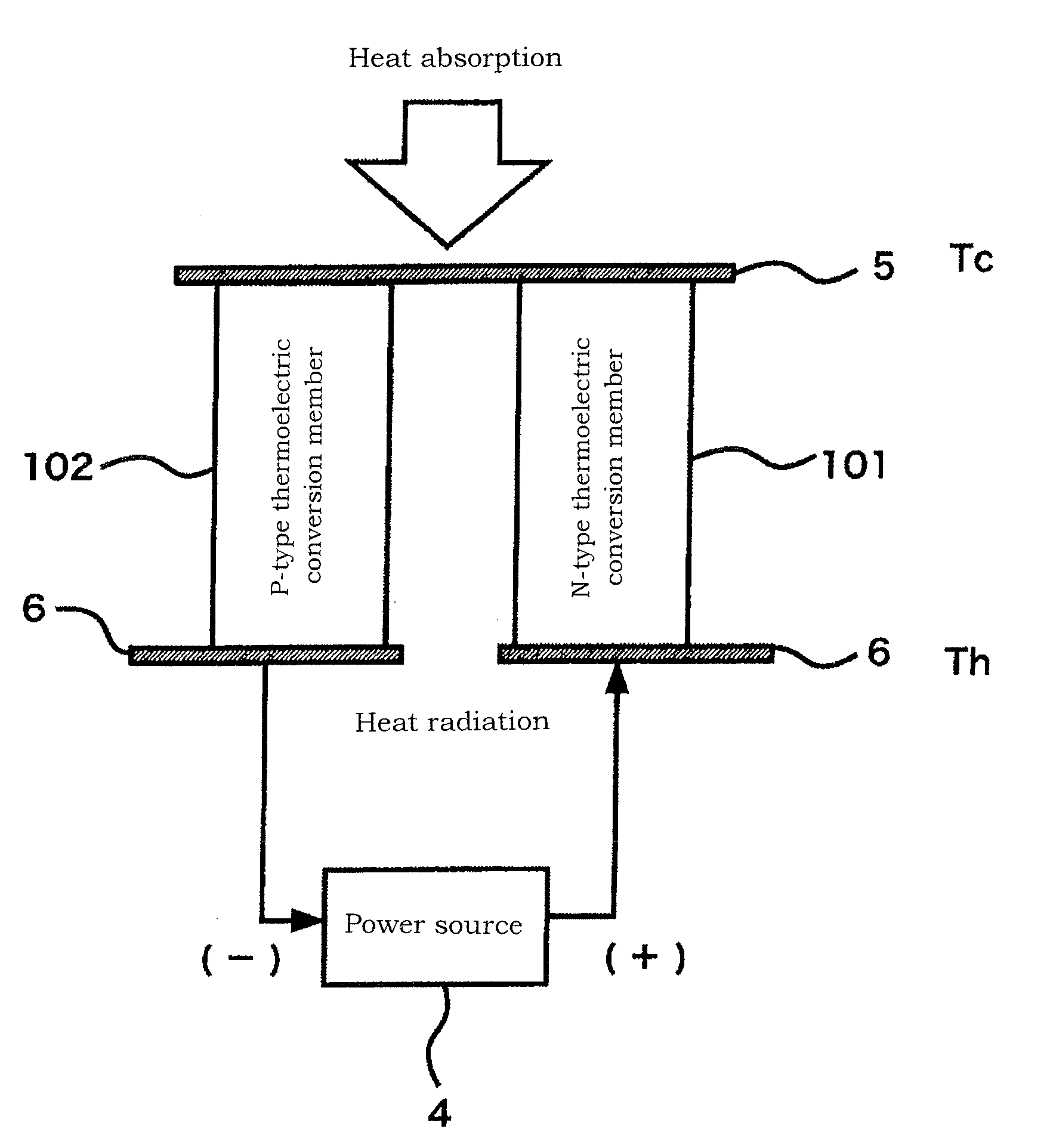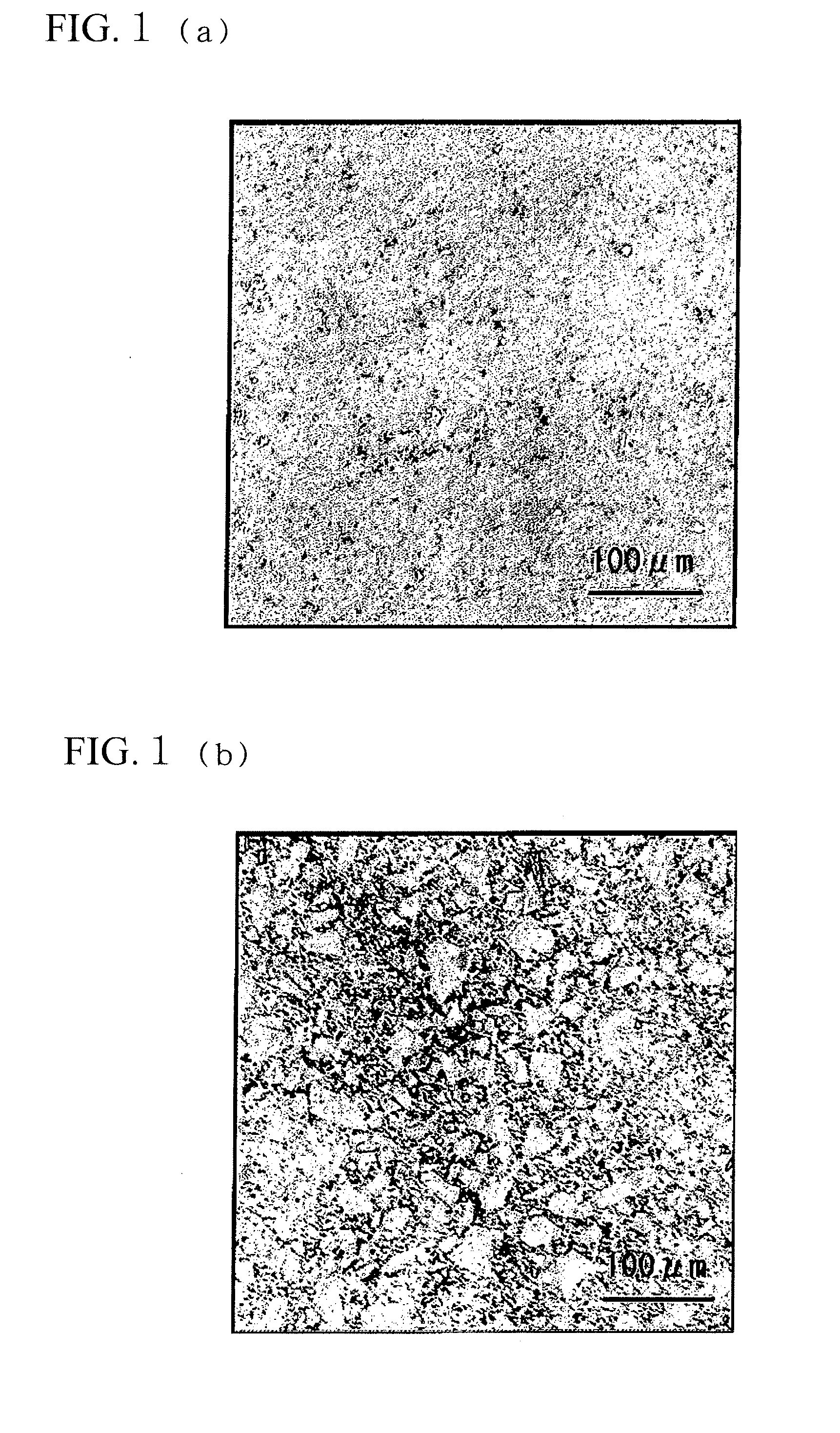Thermoelectric conversion material, method for manufacturing the same, and thermoelectric conversion element
a technology of thermoelectric conversion and thermoelectric elements, which is applied in the direction of silicon, inorganic chemistry, energy-based wastewater treatment, etc., can solve the problems of large amount of produced silicon sludge to be disposed of in landfill to be harmless, large amount of time and cost for treatment, and large amount of fine grain silicon sludge containing various impurities in addition to silicon, etc., to achieve stable and stable thermoelectric conversion performance, high physical strength, and high thermal performan
- Summary
- Abstract
- Description
- Claims
- Application Information
AI Technical Summary
Benefits of technology
Problems solved by technology
Method used
Image
Examples
example 1
[0223]Waste silicon sludge produced in the dicing step of a semiconductor assembling process performed in a semiconductor manufacture was subjected to filtration-separation treatment using a collecting apparatus (Aqua Closer, product of SANYO Electric Co., Ltd.) and a filter press (product of PARKER ENGINEERING CO., LTD.), whereby class 3 silicon sludge having a silicon concentration of 95 mass % and a water content of 5 mass % was obtained. The class 3 silicon sludge was subjected to analysis and confirmed to contain B in a concentration of 100 ppm and p in a concentration of 1,000 ppm.
[0224]Next, the dewatering step in the purifying and refining step was performed. The class 3 silicon sludge was placed in a commercial electric furnace. The sludge was then subjected to heat treatment at 250° C. in air for 3 hours while argon gas containing 5 percent by volume of hydrogen gas was supplied at 3000 L / min to thereby remove water.
[0225]Subsequently, the silicon oxide eliminating step in...
example 2
[0243]Waste silicon sludge produced in a wafer processing process (mirror polishing and back grinding steps) performed in a semiconductor manufacture was subjected to filtration-separation treatment to prepare sludge having a silicon concentration of 92 mass % and a water content of 8 mass %. The analysis revealed that the prepared sludge was class 2 silicon sludge having a B concentration of 6 ppm and a P concentration of 70 ppm.
[0244]The same procedure as in Example 1 was followed except that the obtained sludge was used and a sintering pressure of 30 MPa was used to give a sintered body (not doped).
[0245]The obtained sintered body was analyzed in the same manner as in Example 1. The results showed that the sintered body contained 90 ppm of Al originating from the Al2O3-made melting crucible, 240 ppm of As, 8 ppm of P, and 4 ppm of B.
[0246]The density of the obtained sintered body was 99% of the theoretical density.
[0247]The non-dimensional performance index ZT of the obtained sin...
example 3
[0249]Waste silicon sludge produced in a wafer processing process (mirror polishing and back grinding steps) performed in a semiconductor manufacture was subjected to filtration-separation treatment to prepare sludge having a silicon concentration of 92 mass % and a water content of 8 mass %. The analysis revealed that the prepared sludge was class 2 silicon sludge having a B concentration of 6 ppm and a P concentration of 70 ppm.
[0250]Next, the dewatering step in the purifying and refining step was performed. The silicon sludge was subjected to heat treatment in a commercial electric furnace at 250° C. in air for 3 hours while argon gas containing 5 percent by volume of hydrogen gas was supplied at 3000 L / min to thereby remove water.
[0251]Subsequently, the silicon oxide eliminating step in the purifying and refining step was performed. The dewatered silicon sludge was heat-treated in the same electric furnace at 500° C. in air under reduced pressure for 2 hours while argon gas cont...
PUM
| Property | Measurement | Unit |
|---|---|---|
| Temperature | aaaaa | aaaaa |
| Temperature | aaaaa | aaaaa |
| Temperature | aaaaa | aaaaa |
Abstract
Description
Claims
Application Information
 Login to View More
Login to View More - R&D
- Intellectual Property
- Life Sciences
- Materials
- Tech Scout
- Unparalleled Data Quality
- Higher Quality Content
- 60% Fewer Hallucinations
Browse by: Latest US Patents, China's latest patents, Technical Efficacy Thesaurus, Application Domain, Technology Topic, Popular Technical Reports.
© 2025 PatSnap. All rights reserved.Legal|Privacy policy|Modern Slavery Act Transparency Statement|Sitemap|About US| Contact US: help@patsnap.com



